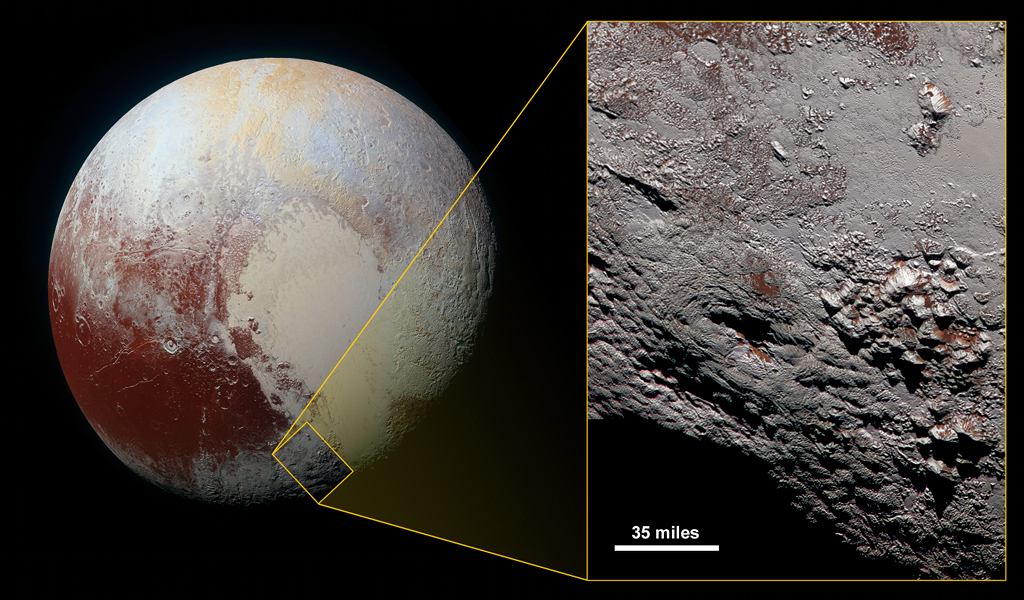Cryovolcano is a cool word, literally and figuratively. You hear about it a lot when talking about solar system moons like Enceladus, and it’s one of those words that would make a heck of a great Hollywood disaster movie title, like ‘Sharknado’ or ‘Armageddon.’ I do not, however, endorse either of those movies, they were both terrible. At any rate, a real cryovolcano seems like an interesting thing. It’s a volcano in the sense that it looks a little like a mountain and spews out material when the pressure builds from beneath the surface, but it’s not your traditional Earth-like volcano that shoots out molten rock and gasses from deep within the Earth. A cryovolcano spews out ice and frozen gases that are trapped beneath a frozen crust, and there may be more of them than you think.

Pluto has an atmosphere of methane, which has been one of the most surprising discoveries by New Horizons, and no one really knows why. Generally, a lighter planet like Pluto lacks the gravity to hold onto an atmosphere for very long, unless there is some mechanism to replenish it. And cryovolcanoes are one such mechanism. If a cryovolcano spews up methane from beneath the surface every few million years, Pluto can still have an atmosphere. Identifying them can be tricky, but we may have our first view of one.
Near the southern part of the heart region of Pluto, like a mountain called Wright Mons, over 150 Km we and 4 Km high, it has a huge depression in the middle, not unlike a volcano from Earth or even the massive Olympus Mons on Mars. Could these be cryovolcanoes that have recently erupted?
One major clue lies in cratering. Generally speaking, the older a geological feature is, the more craters it has, since it’s been around long enough to have numerous impacts that haven’t been filled in by natural processes. It’s true that the outer solar system would experience less cratering than the inner solar system planets, but relatively speaking, older parts of Pluto will have more craters than newer parts. Looking back to Earth, it would have a lot more craters if it wasn’t for wind and rain erosion to cover them up over time. So by looking at the slopes of Wright Mons, relatively few craters are apparent, suggesting that some kind of recent process has filled them up, maybe even ice and dust from a volcanic eruption.
Researchers are continuing to work in order to identify other similar features on Pluto in an attempt to characterize its geologic history. And as more data comes in from New Horizons, we should be able to look at more of these individual features and see how they fit into the life and times of Pluto.
